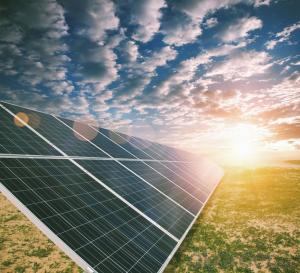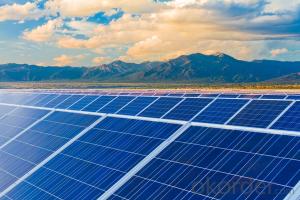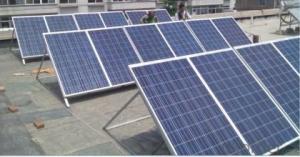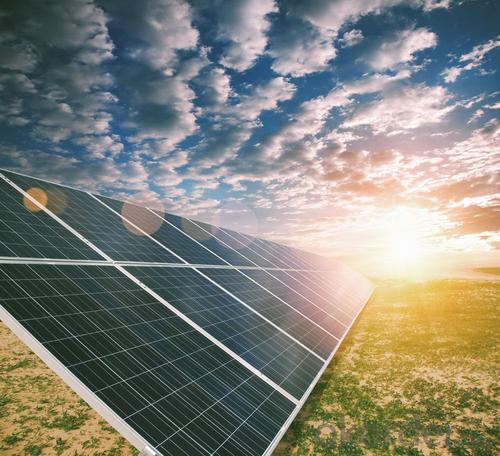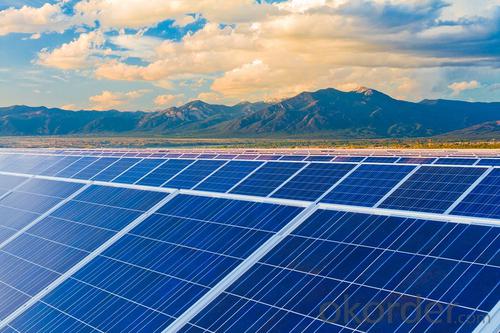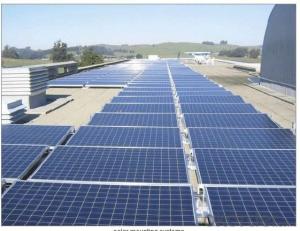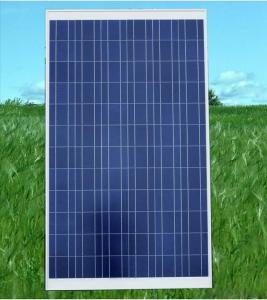5G Solar Panels (85-90w) CNBM Solar Polycrystalline 6 Series
- Loading Port:
- China main port
- Payment Terms:
- TT OR LC
- Min Order Qty:
- 100000 watt
- Supply Capability:
- 10000000 watt/month
OKorder Service Pledge
OKorder Financial Service
You Might Also Like
About us
CNBM International Corp, established in 2004, is the business entity for trade and logistic of CNBM Group.With the advantages in Cement, Composite Materials, New Building Materials and Engineering, CNBM mainly concentrate on coal, steel and construction equipments and give priority to solar and wind energy development.CNBM International is highly recognized by its business partners and clients all over the world and has established good business relationship with the customers in over 120 countries and regions all over the world.
Process is as follows:
1, the battery test
2, positive Welding - Inspection –
3, on the back of cascading - Inspection –
4, laying (glass cleaning, material cutting, glass pre-processing, laying) –
5, laminating –
6, to flash ( to the side, cleaning) –
7, fitted border (glue, loading angle keys, punching, install box, scrub I glue) –
8, the welding junction box –
9, high-pressure test –
10, component testing -- -
11 appearance inspection, packaging and storage;

Data sheet
| Characteristics | |
| Max Power Voltage Vmp (V) | 17.4V-17.6V |
| Max Power Current Imp (A) | 4.89A-5.12A |
| Open Circuit Voltage Voc (V) | 22.4V-22.6V |
| Short Circuit Current Isc (A) | 5.22A-5.46A |
| Max Power Pm (W) | 85W-90W |
| Temperature Coefficient of Cells | |
| NOCT | 47℃±2℃ |
| Temperature Coefficients of Isc (%/℃) | 0.06% |
| Temperature Coefficients of Voc (%/℃) | -0.33% |
| Temperature Coefficients of Pmp (%/℃) | -0.45% |
| Mechanical Data | |
| Type of Cells (mm) | Poly156×93.6 |
| Dimension | 920×670×30mm |
| Weight | 6.9kg |
| NO.of Cells and Connections | 4×9=36 |
| Limits | |
| Operating Temperature | –45°C to +80°C |
| Storage Temperature | –45°C to +80°C |
| Max System Voltage | 700V |
FAQ:
1. How long will my inquiry get response?
Your inquiry related to our products or prices will be replied within 24 hours.
2. Can I get professional service and suggestion?
Well-trained and experienced staffs to answer all your questions in fluent English.
3. Do you accept OEM or customized design?
OEM & ODM, any your customized lightings we can help you to design and put into product.
4. What if I need specific design?
Distributorship are offered for your unique design and some our current models.
- Q: Rooftop solar panel (not sure if rubber or plastic?) has leak arising from thin vertical crack in panel about long. Any ideas for repair?Thanks.
- This Site Might Help You. RE: rooftop pool solar panel leaks? Rooftop solar panel (not sure if rubber or plastic?) has leak arising from thin vertical crack in panel about long. Any ideas for repair? Thanks.
- Q: Can solar panels be installed in a desert environment?
- Yes, solar panels can be installed in a desert environment. In fact, desert regions are highly suitable for solar energy generation due to their high levels of sunlight and low cloud cover. The dry and arid conditions in deserts also help in reducing the maintenance and cleaning requirements of solar panels.
- Q: I need a new roof soon and I was wondering what the difference in cost would be from a standard shingle roof to a roof including solar panels. Does anyone know the cost difference?
- The solar panels are very expensive to provide much power. If u go that way do not skimp on the support as a high wind will blow them away. In Ecuador I put in a remote site for communications. It was working good when a Strong wind blew $0.000 worth of solar panels all over the jungle.
- Q: Can solar panels be used for powering outdoor events or festivals?
- Yes, solar panels can definitely be used to power outdoor events or festivals. They are a sustainable and reliable source of energy that can provide electricity to run lights, sound systems, food stalls, charging stations, and other equipment needed for such events. Additionally, solar panels can be easily set up in open areas, making them ideal for powering outdoor gatherings without the need for grid electricity or noisy generators.
- Q: I have heard you can make your own solar panels.... But How?Where do you start? Is it cheap, or should I just BUY them already made?
- If you're thinking of solar electric panels then forget it. It you just want to dabble in solar power then shop around for a 5 volt panel. Find out how many watts it puts out and then divide the cost $$ by the wattage. The lower the cost per watt the better of a deal you'll be getting That's generally speaking of course because it doesn't take quality into account but it's a practical way to compare panels. On the other hand, it you want to make a solar panel that will heat hot water then it's a different story. You can have a lot of fun with that project and you'll find a lot of plans on the Internet.
- Q: what kind of rays are used in solar panels?
- Electrons----- okorder /
- Q: How do solar panels impact the energy independence of a region?
- Solar panels can significantly enhance the energy independence of a region by generating clean and renewable electricity. By harnessing the power of the sun, solar panels reduce dependency on fossil fuels, which are often imported from other regions or countries. This increased reliance on solar energy can help reduce the costs associated with importing and transporting traditional energy sources, thus promoting greater energy self-sufficiency. Additionally, solar panels enable communities to generate their own electricity, reducing their reliance on centralized power grids and fostering local energy production. Overall, solar panels play a crucial role in enhancing the energy independence of a region by providing a sustainable and locally-sourced energy solution.
- Q: Can solar panels be installed on any type of roof?
- Solar panels can be installed on most types of roofs, including flat, sloped, and angular roofs. However, some factors like the roof's orientation, shading, and structural integrity may affect the efficiency and feasibility of installation.
- Q: Can solar panels be used to power a museum?
- Yes, solar panels can be used to power a museum. Solar panels capture sunlight and convert it into electricity, which can then be used to power various electrical systems within the museum. This sustainable energy source can help reduce reliance on traditional grid electricity and lower the museum's carbon footprint. Additionally, advancements in solar technology have made it more efficient and cost-effective, making it a viable option for powering both small and large-scale facilities like museums.
- Q: Can solar panels be installed in areas with high levels of saltwater exposure?
- Yes, solar panels can be installed in areas with high levels of saltwater exposure. However, it is important to consider the potential effects of corrosion on the panels and their supporting structures. Proper maintenance and regular cleaning of the panels can help mitigate the impact of saltwater exposure and ensure optimal performance and longevity. Additionally, selecting corrosion-resistant materials and utilizing protective coatings can further enhance the durability of solar panels in such environments.
Send your message to us
5G Solar Panels (85-90w) CNBM Solar Polycrystalline 6 Series
- Loading Port:
- China main port
- Payment Terms:
- TT OR LC
- Min Order Qty:
- 100000 watt
- Supply Capability:
- 10000000 watt/month
OKorder Service Pledge
OKorder Financial Service
Similar products
Hot products
Hot Searches
Related keywords
